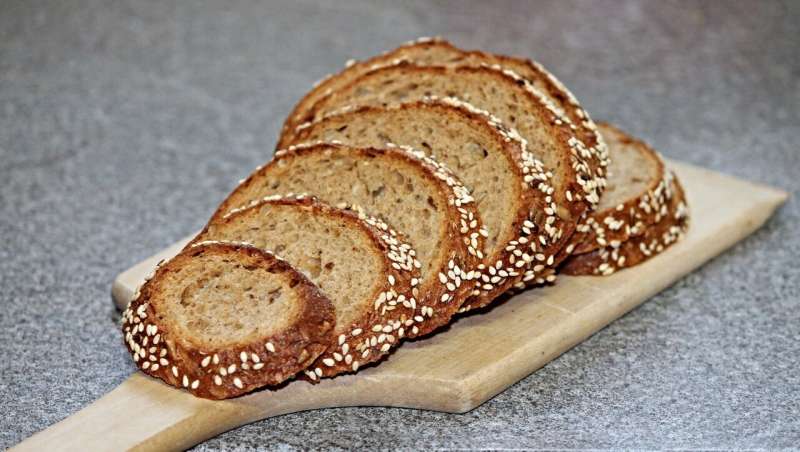This article has been reviewed according to Science X's editorial process and policies. Editors have highlighted the following attributes while ensuring the content's credibility:
fact-checked
peer-reviewed publication
proofread
Study: Health information slightly increases whole grain consumption

Whole grain products are healthy, but not particularly popular. However, providing information of their benefits can change that, at least a little bit. This is demonstrated by a recent study conducted by the University of Bonn, involving over 300 people between the ages of 18 and 39. But despite receiving relevant information daily for two weeks, the effect was relatively small.
The researchers therefore believe that education alone is unlikely to achieve the recommended consumption levels. The study has now been published in the journal Appetite.
Whole grains are grains from which the bran is not removed during processing. This contains particularly high levels of fiber, high-quality oils, vitamins and minerals. Whole grain products are therefore healthy: They satiate more and longer, strengthen the immune system and reduce the risk of diabetes and high blood pressure.
Nevertheless, they eke out a shadowy existence on supermarket shelves. One of the main reasons is their taste: "Many people say in surveys that they don't find whole-grain foods as tasty as conventional products," explains Dr. Nina Weingarten of the Institute for Food and Resource Economics (ILR) at the University of Bonn.
However, there may be other reasons as well: "For instance, the health-promoting effect of the products is often underestimated," says the psychologist. "In addition, consumers often don't know how to incorporate whole grains into their daily diet—possibly because they lack recipes."
Recipes do not help to make whole grains more popular
But does addressing these information gaps change consumer behavior? The researchers Dr. Nina Weingarten and Prof. Dr. Monika Hartmann investigated this question. Together with a market research institute, they recruited more than 330 women and men between the ages of 18 and 39 for a long-term online study. The participants were divided into four groups. One of them received an email with health information every day, for example, "Consuming whole grains daily reduces the risk of stroke."
A second group, in contrast, was provided with daily recipe suggestions. Group three received both—information on the health benefits of whole grains and ideas for incorporating the food into their diet. Group four served as a control; its members found a message in their inbox each morning with information about seasonal fruits and vegetables.
Overall, this part of the study ran for a period of fourteen days. "Immediately afterwards, we examined how consumer attitudes and behavior had changed compared to the start of the experiment," Weingarten says. "Among other things, they were asked to indicate what they thought of whole-grain foods and how often they had eaten such products in the past two weeks." Four weeks later, they were asked the same questions again.
Analysis of the data showed that recipe suggestions alone had no effect: The women and men in group two did not report significantly changed attitudes toward whole grain products. Their consumption behavior had not changed either. The situation was different for consumers who had received health information: They now gave whole-grain foods significantly better marks. Moreover, the corresponding products now appeared on their plates a little more often. But this effect was not detectable until four weeks after the end of the study.
Information provision works—but only a little
So information provision does have an effect. The sobering part of this message, however, is: It is not particularly large. This can be seen, for example, in the frequency of whole grain consumption, which had to be indicated on a scale from 1 (not once in the last 14 days) to 7 (11 to 14 times). In the health info group, the mean score changed from 2.84 before the experiment started to 3.04 four weeks after it ended.
Weingarten and Hartmann therefore believe it is unlikely that information alone can boost whole grain consumption to the level that would be recommended.
"Other measures need to be introduced additionally—for example, that more attention is drawn to the products in supermarkets, or that manufacturers develop new recipes to make them more palatable," says Weingarten. "Restaurants or fast-food chains could also offer and promote more dishes with whole grains, such as pizza with a whole-grain crust or burger buns made with whole-grain flour."
More information: Nina Weingarten et al, Fifty shades of grain—Increasing whole grain consumption through daily messages, Appetite (2023). DOI: 10.1016/j.appet.2023.106608


















